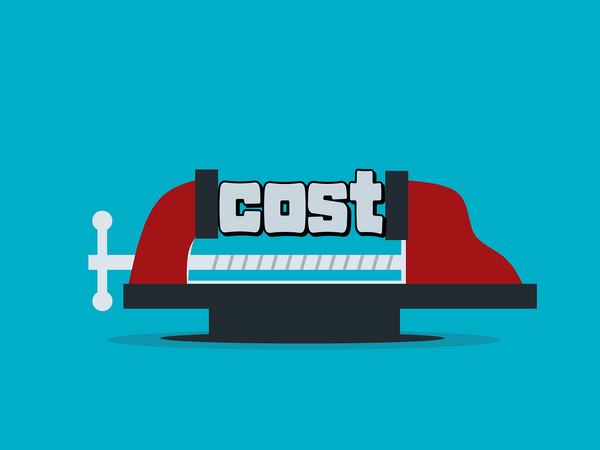In an economic climate rife with challenges, businesses are constantly hunting for ways to trim expenses without slashing their growth potential.
As a CFO, you're at the helm, steering your company toward financial stability. But how do you cut costs without cutting corners?
Below, we dive into five effective cost-reduction strategies to help you reduce costs and keep the cash rolling in.👇🏼
1. Keep a close eye on cost drivers
Only 11% of organizations can sustain cost cuts over a three-year period. Gartner claims this is because most cost-cutting strategies are short-term and fail to preserve the behavioral change required for smart spending decisions in the future. So, you've got to think about long-term strategies and keep a close eye on cost drivers.
Understanding what drives costs is key to controlling them. To do this well, you must be in a constant state of investigation, deduction, and evaluation.
Cost drivers are the specific elements that impact the cost of running your business. We’re talking about anything from operational inefficiencies to raw material costs, and even regulatory compliance.
Examine each product and service
Every product or service your business offers has its unique set of cost drivers. It's your job to identify these. So, explore each offering and look for clues that reveal why costs are what they are.
Consider factors such as the materials required, the labor involved, and the time it takes to deliver the service or product. Look at how these factors affect the overall cost of production and delivery.
Who knows, your findings might surprise you and shine a light on areas where costs could be lowered without compromising on quality.
Pinpointing cost drivers
To identify cost drivers, you'll need to delve into the data. Remember, numbers are your allies. So, go back and analyze financial reports, performance metrics, operational data, and even customer feedback.
What you’re looking for are trends and correlations that could indicate a cost driver. For instance, does the cost of a product increase when production volume goes up? If do, it could be a sign of insufficient capacity or efficiency in your production line.
Ask the right questions
The famous Sherlock Holmes never solved a case without asking a ton of questions, and neither will you. So, take a page from his book and start questioning everything.
Why are some processes slower than others?
Why does one product have a better profit margin?
Why does a particular service cost more than industry peers?
Identify bottlenecks and hold-ups. Maybe it's an outdated piece of equipment that's slowing down production or a supplier who's constantly late with deliveries. These are your cost drivers and identifying them is half the battle.

2. Good costs, bad costs: Know the difference
Think all costs are created equal? Think again. There's a fundamental difference between 'good' costs and 'bad' costs, and it's pivotal to your cost reduction strategy.
Good costs are those that bring value to your business, leading to a return on investment (ROI). They're the expenses poured into product development, marketing campaigns, or customer service - elements that drive your business forward.
On the other hand, bad costs are those that don’t contribute to growth or enhance your business in any tangible way. They're the dusty gym equipment in the office that nobody uses or the expensive software subscription that's rarely utilized.
The trick is to scrutinize your current expenditures. Identify these bad costs, and start trimming.
3. Capture the easy wins
Cost reduction strategies don't always have to be complex. Sometimes, it's all about capturing the low-hanging fruits or, as we like to call them, the easy wins. These are areas where you can save money without a significant impact on your business operations or employee morale.
For example, could you negotiate better rates with your suppliers? Or perhaps you could switch to a less expensive service provider for certain non-core business functions? A bit of market research can reveal opportunities for savings that you might not have thought possible.
And don't overlook in-house operations either! Simple changes like implementing energy-saving measures, or using cost-effective communication tools, can contribute to your pool of easy wins.
Embracing technological advances can also offer easy wins. Transitioning to cloud storage, for instance, can be a more affordable and efficient alternative to maintaining costly on-site servers.
The key here is to start capturing these easy wins early. They might not radically change your bottom line overnight, but in the long run, these incremental savings can add up to make a substantial difference. Plus, demonstrating these early successes can foster a cost-saving culture within your team, leading to even more innovative cost-cutting ideas.

4. Automate, automate, automate!
By automating repetitive, time-consuming tasks, you can significantly cut labor costs and improve efficiency. From customer service chatbots to automated data entry systems, there's a wealth of tech tools at your disposal. Sure, it requires an initial investment, but the long-term cost savings and increased accuracy make it worth every penny.
If you’re focusing on ways to automate processes within the finance function, here are a few ideas you might want to consider:
Accounts payable automation
As a CFO, you're likely no stranger to the mountains of invoices that need to be processed regularly. With accounts payable automation, you can streamline the entire process. The software can automatically capture invoice data, match invoices to purchase orders, route invoices for approval, and even schedule payments. This eliminates the need for manual data entry, reduces errors, and saves countless hours of work.
Budgeting and forecasting automation
Budgeting and forecasting are critical for strategic planning, but they can be time-consuming and prone to errors. Automation tools can streamline these processes by gathering and analyzing data, generating accurate forecasts, and even adjusting budgets in real time based on changing business conditions.
Payroll automation
Payroll is another area where automation can yield significant savings. By automating payroll, you can reduce the time spent on data entry, tax calculations, and paycheck distribution. Plus, automated systems can help ensure compliance with tax laws and labor regulations, helping you avoid costly fines and penalties.
5. Outsourcing and remote work
In today's interconnected world, having all business functions in-house is no longer necessary, or even desirable.
A key part of your cost reduction plan could include outsourcing non-core activities, such as IT support, customer service, or accounting, which can be a smart, cost-effective move. It gives you access to expert services at a fraction of the cost of hiring full-time, in-house staff.
You may also want to consider moving from on-site to remote or hybrid working. The financial burden of maintaining physical office spaces often dwarfs the cost of accommodating remote workers. This becomes even clearer when you add in expenses such as office supplies, utilities, and corporate internet services. By reimbursing employees for the professional use of their personal resources, like home offices and internet connections, businesses can unearth significant cost savings.
Remember, the essence of strategic cost reduction isn't about mindlessly slashing expenses; it's about making smart decisions that will boost your business's financial health while preserving its integrity and growth potential.
So, roll up those sleeves and get started—your company's bottom line will thank you!
FAQs: Cost reduction strategies
How can CFOs identify areas of potential cost savings?
By using financial analysis, CFOs can highlight high-cost areas, wasteful spending, and opportunities for process improvement.
What is a cost reduction strategy?
It's a plan to lower expenses, focusing on unnecessary costs without compromising the product or service quality.
Can cost reduction impact a company's quality or output?
If not handled well, yes. That's why it's essential to focus on reducing unnecessary costs and improving efficiency, rather than across-the-board cuts.
Join our Slack community
It's an empowering platform for finance professionals like you, offering an exclusive space to connect, learn, and grow. We bring together diverse minds from the finance world, facilitating knowledge sharing and fostering innovation.
From topical discussions and expert insights to collaborative projects, you'll find value in every interaction. Join us to stay updated with the latest in finance, network with peers, and contribute to shaping the future of our industry.




 Follow us on LinkedIn
Follow us on LinkedIn




